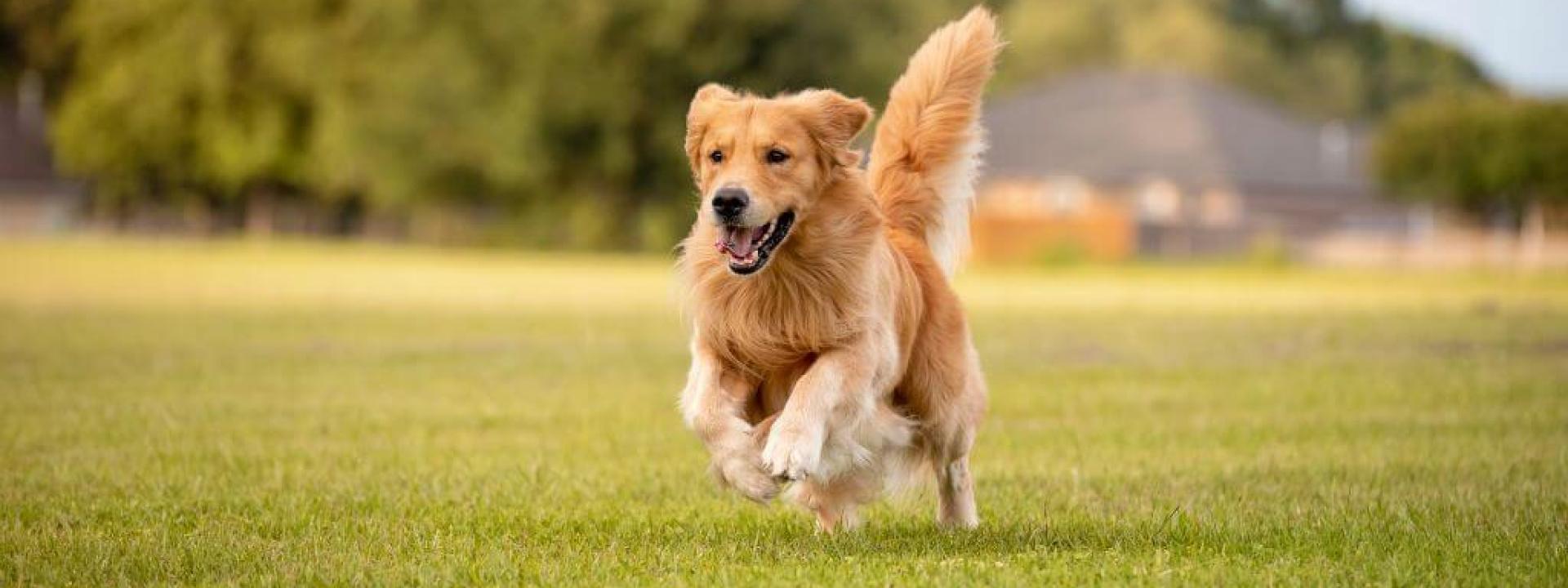Choosing the right dog is a big decision, especially for families. While a playful puppy might seem like an automatic win to a bustling household, it’s important to consider your lifestyle, living arrangements, and future plans before settling on a new furry addition for the family.
While every size and breed of dog has its own unique charm, today, we are highlighting five large breeds that we absolutely adore for family households. Each of these breeds brings something special to the table, making them ideal family companions for various reasons. Join us as we explore the qualities that make these breeds a possible great fit for your family.
1. Golden Retrievers
Golden retrievers are beloved for a reason! These gentle canines boast a playful, intelligent, and eager-to-please temperament. Their patience with children and tolerant attitudes make them a perfect pet for playtime with the whole family, from baby days to senior settings. This breed is highly used as therapy dogs who visit schools, hospitals, and nursing homes because of their love and gentleness.
Golden retrievers are highly trainable and excel in various activities, from obedience training to agility courses. While they have moderate to high energy levels, they can adapt to different activity levels as long as they exercise regularly. Be prepared for some shedding, though!
Golden Retriever Fun Fact: Goldens are known for their love of water and tend to be great swimmers. They were originally bred in Scotland for retrieving game from both water and land. Golden Retrievers have a “soft mouth,” which means they can carry items, including raw eggs, without breaking them!
2. Labrador Retrievers
Labrador retrievers share many similarities with their golden retriever cousins. They’re friendly, outgoing, and have an abundance of energy. Labs thrive on family interaction and love participating in all the fun. Their devotion and loyalty to their families make them excellent companions, especially for children. It’s no wonder they were the most poplar dog breed in the Unites States, Canada, and the United Kingdom for 31 years!
Their boundless energy means plenty of exercise and playtime to keep them content. Daily walks, games of fetch, and interactive toys are essential to keep your Labrador retriever happy and well-behaved. If you have an active family, they will keep up right beside you! Chewing is a common Labrador habit, especially in puppies, so providing them with appropriate chew toys is important.
Labrador Retriever Fun Fact: Labrador Retrievers have a distinctive double coat that helps them stay warm in cold water and practically be water proof! Their otter-like tail also aids in their swimming prowess.

3. Bernese Mountain Dogs
Bernese mountain dogs offer a calmer alternative to high-energy retrievers. These beautiful dogs are gentle, affectionate and known for their exceptional patience with children. Their loyalty and protectiveness make them natural watchdogs who keep a watchful eye over their families.
Eager to please, Bernese mountain dogs respond well to training. While they have moderate energy levels, they enjoy outdoor adventures with the family, whether hiking in the woods or strolling through the park. Keep in mind that their thick double coat requires regular brushing, and some Bernese mountain dogs are predisposed to certain hereditary health conditions. Consulting a veterinarian for pre-breeding screening recommendations can help you bring home a healthy puppy.
Burnese Mountain Dog Fun Fact: Bernese Mountain Dogs don't fully mature until they're 2 to 3 years old, so they stay in the playful puppy stage longer than many other breeds. They are known to be slow to mature mentally, which means they might take a bit longer to understand and perform their tasks as working dogs.
4. Newfoundlands
Newfoundlands truly embody the “gentle giant” moniker. These majestic dogs are known for their calm, loyal, and patient temperament. Their love for children makes them wonderful companions, and their natural affinity for water turns any family outing to the beach or lake into a splashtastic adventure.
While Newfoundlands have moderate energy levels, they still require regular walks and playtime to stay happy and healthy. Due to their size, they do require a lot of space, so apartment living isn’t ideal for this breed. Be prepared for some potential drooling — it’s a characteristic trait of the breed– and daily groomingfor their fluffy, coarse coat. Their large size also means they might require extra supervision around swimming pools to ensure everyone’s safety.
Newfoundland Fun Fact: Newfoundlands are amazing swimmers, thanks to their partially webbed feet! It's like having little flippers, which is pretty cool for a dog. This unique trait, also found in a few other breeds like our labradors above, makes them natural water lovers.

5. Boxers
Boxers bring a playful, energetic and silly spirit to a family. These loving dogs are fiercely loyal and protective of their loved ones. Their eagerness to please and intelligence make them highly trainable. Their high energy levels require plenty of daily exercise and mental stimulation. Just as with our other highly spirited pups, long walks, playtime, and interactive toys are a few great ways to keep your boxer pup out of trouble and mentally engaged.
Early socialization and consistent training are recommended for boxers, as their playful nature can sometimes translate to stubbornness. With proper training and guidance, boxers become well-mannered and loving members of the family.
Boxer Fun Fact: Boxers have a playful and clownish personality, often making them the entertainers of the family. They got their name from their tendency to "box" with their front paws when playing or defending themselves.
Beyond Breeds: Considerations for Choosing a Large Dog
While breed characteristics offer valuable insights, remember that every dog is an individual.
Here are some additional factors to consider when welcoming a large dog into your family:
- Living Space: Large dogs require ample space to move around comfortably. Consider a smaller breed or one with moderate energy levels if you live in an apartment.
- Activity Level: Can your family keep up with a high-energy dog who needs daily walks and playtime?
- Children’s Ages: Very young children may be overwhelmed by a large, energetic dog. Opt for a calmer breed known for patience with children.
- Time Commitment: Large dogs require regular walks, training, grooming, and playtime. Ensure your family has the time to properly care for a dog.
- Financial Considerations: Food, vet care, and potential training costs should factor into your decision.
Finding Your Perfect Match
This blog offers a glimpse into the wonderful world of large dogs that can thrive in family settings, but these are just five breeds we adore, there are so many more to explore!. Each breed has a unique personality and needs, so consider your family’s lifestyle and activity level when deciding.
As veterinarians, we recommend talking to a vet to discuss your needs and preferences. They can offer insights into different breeds based on your family’s situation and help you find the perfect friend. Plus, they’ll inform you about any common health issues in the breed you’re considering.
Don’t hesitate to contact reputable breeders or animal shelters. Breeders can provide information about specific bloodlines and potential health screenings performed on their dogs. Shelters often have a variety of breeds, including large dogs, waiting for their forever homes. Regardless of where you find your new furry family member, responsible adoption or breeding practices are crucial.
If you have questions and you'd like to reach out to us, you can call us directly at (319) 234-7511 , or you can email us at ppcvets@gmail.com. Don't forget to follow us on social media Facebook, Instagram.

